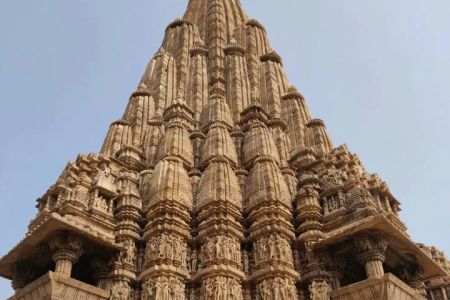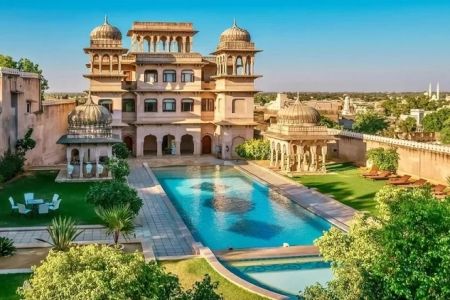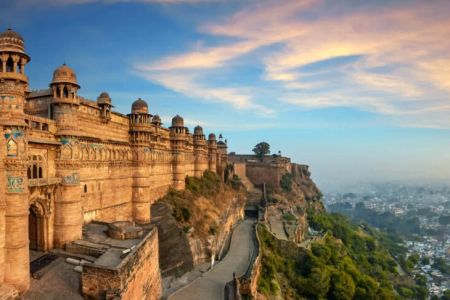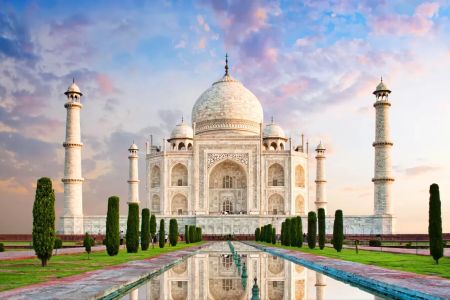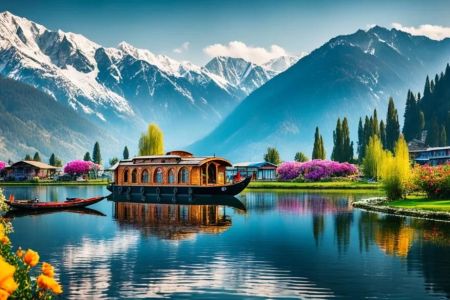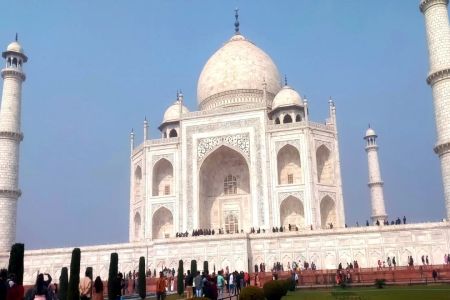Must-see Historical Landmarks in India: A Journey Through Time
1. Taj Mahal - A Symbol of Eternal Love
Undoubtedly the most iconic historical landmark in India, the Taj Mahal in Agra is a breathtaking monument dedicated to love. Built by Emperor Shah Jahan in memory of his wife Mumtaz Mahal, it stands as a stunning example of Mughal architecture. The pristine white marble and intricate carvings, coupled with the serene reflecting pool, make the Taj Mahal an absolute must-see.
Travelers often share that the sight of the Taj Mahal at sunrise or sunset is an unforgettable experience. The way the light shifts across its surface adds a magical feel to the visit. It's not just a historical site but also a place for reflection and awe.
2. Qutub Minar - Architectural Marvel of Delhi
Standing tall at 72.5 meters, Qutub Minar in Delhi is the tallest brick minaret in the world and a UNESCO World Heritage Site. Its intricate carvings and inscriptions offer a glimpse into the rich history of the Delhi Sultanate. The minaret is an impressive blend of Afghan, Persian, and Indian architectural styles, making it a unique historical landmark in India.
A visit to Qutub Minar often includes a walk through the surrounding Qutub Complex, where you'll find several other ancient structures, like the Iron Pillar of Delhi, which is over 1,600 years old and rust-free despite its age.
3. Red Fort - The Heart of Mughal History
The Red Fort in Delhi is a masterpiece of Mughal architecture and a UNESCO World Heritage Site. This massive fort, built by Emperor Shah Jahan, was once the main residence of the Mughal emperors. Its massive red sandstone walls and beautiful gardens make it an impressive site for history enthusiasts and architecture lovers alike.
Visitors often explore the fort's numerous gates, museums, and palaces, which house artifacts from India's colonial past. The fort’s nightly sound and light show, narrating the history of the Mughal empire, is an experience worth attending.
4. Jaipur Palaces - A Glimpse into Royalty
Jaipur, known as the "Pink City," is home to several opulent palaces that speak of its royal history. The City Palace and the Hawa Mahal are two of the most prominent historical landmarks in India. The City Palace, with its blend of Mughal and Rajput architecture, showcases the grandeur of Rajasthan's royal family.
Travelers rave about the Hawa Mahal, also known as the "Palace of Winds," which features over 900 intricately designed windows. This unique structure allowed the royal ladies to observe life in the city without being seen. A visit to Jaipur offers a vibrant mix of history, culture, and royal splendor.
5. Sanchi Stupas - Ancient Buddhist Heritage
The Sanchi Stupas in Madhya Pradesh are one of India's oldest and most significant Buddhist sites. The Great Stupa at Sanchi is a remarkable architectural feat and a UNESCO World Heritage Site. It contains relics of Buddha and features stunning sculptures that depict stories from Buddhist teachings.
Visiting Sanchi is like stepping back in time to India’s ancient Buddhist era. The peaceful environment and the grandeur of the stupas make it a must-see for those interested in spiritual history and architecture.
6. Humayun's Tomb - A Mughal Masterpiece
Humayun's Tomb in Delhi is an architectural marvel and a precursor to the Taj Mahal. The tomb was commissioned by Humayun's widow, Empress Bega Begum, and is a perfect example of Mughal architecture, with its symmetrical gardens and red sandstone structure.
Travelers often note the tomb's peaceful ambiance, which contrasts with the bustling city around it. The site is also a UNESCO World Heritage Site, and its significance in Mughal history makes it an essential stop for any history enthusiast.
7. India Gate - A National Memorial
Located in the heart of Delhi, the India Gate is a national monument commemorating soldiers who died in the First World War. This 42-meter-high archway is a symbol of sacrifice and patriotism, offering a reflective space for visitors.
It’s particularly beautiful at night, when the monument is lit up, and visitors can enjoy a peaceful evening walk around its surroundings. India Gate is a must-see historical landmark for those looking to understand India’s history of war and independence.

